INSTRUMENTARIUM XX1 is an innovative project whose main objective is the design, construction and validation of musical instruments for the 20th century, characterized by the hybridization between analog and digital, combining tradition, avant-garde and sustainability. The instruments, made with ecological materials, will have the possibility of amplification through an electrical-mechanical system based on low cost technology. Characteristics of these will be the ergonomics and adaptability to different ages and physical conditions, their robustness and portability. Its ability to generate new sounds and its detachment from a specific sound paradigm will facilitate the multicultural fit and the opening towards contemporary languages. The other objective is to validate the instruments created with people of all ages, through their active and inclusive participation in artistic creation processes. INSTRUMENTARIUM XX1 is conceived as an itinerant, installable, educational and cultural sound laboratory for quality creative and artistic development and that guarantees a society more committed to art and culture. Validation takes the form of plural intervention in formal, non-formal and informal educational and cultural contexts, pursuing another of the objectives, that of knowledge transfer. An investigation will be initiated that allows the improvement of benefits and actions through data obtained from the experiences of the participants.
This project aims to identify the main initiatives on children's participatory experiences and governance in the Valencian Community. The research will allow to know the tools and main child participatory methodologies used. With this, useful and innovative information will be offered to articulate an operational guide for capacity building in children's participatory experiences, especially participatory budgets with a focus on children.
The project proposes the establishment of a research program around the analysis of the complexities and definition of the Valencian identity and how it is developed and built in a remarkable way through artistic, aesthetic and design manifestations. In this way, the project addresses this analysis from the arts, design and visual culture, fundamental aspects on which identities are built and projected and which have a very important impact on their very definition.
The Complex Trajectories project, a project funded by the Erasmus + program, aims to understand the increasingly diverse and complex trajectories of students at university, and to provide support to the people who go through them. It not only aims to guarantee inclusive access to university programs, but also success in carrying out studies regardless of the socioeconomic situation of the people who study them.
The project plans to define a system for monitoring the trajectories of students that allows the development of support policies both institutional and of the university system and to define indicators to avoid dropping out. In this sense, it is proposed that the center of the analysis of the trajectories is not the program (graduation rates, etc.), but the student body. Thus, a trajectory will be considered successful regardless of whether there have been changes in studies or in the study modality.
Women's Legacy: Our Cultural Heritage for Equity' is a European project organized by the
Ministry of Education, Culture and Sports of the Generalitat Valenciana and directed by the
researcher Ana López-Navajas, whose objective is to contribute decisively to
the inclusion of women protagonists of history and culture and their legacy in the contents
educational.
Based on cross-border regional cooperation and funded by the program
Erasmus+, under the KA201 modality of strategic partnerships for development and innovation,
aims to respond to a common European need to correct the androcentric vision
of the culture transmitted in education, through the recognition of the contributions
culture of women and their inclusion in the place that corresponds to them in the materials
educational.
In this way, its social value and its role as the protagonist of culture and society are restored.
history. With the accessible and free publication of the intellectual products produced in
The framework of the project will facilitate the transmission in the classroom of a complete and truly universal culture, which recovers the European cultural heritage and helps the
eradication of gender inequalities from the base.
In line with the work on perpetrators of mass violence and their cultural representations, the object of this research project consists in analyzing the narrative and iconographic representation of emblematic sites of mass violence, as well as the resignification of these sites through memory politics, historical pedagogy, judicial trials and Human Rights culture. The research line of this project focuses on a comparative perspective on seven sites of perpetration located in four substantially different areas and contexts: Spain, Germany, Cambodia, and Latin America’s Southern Cone.
This comparative perspective allows us to study the role played by microspaces, the material artifacts, the museum’s layout and narrative (audioguides), the peripheral rooms and activities, the literary production (memoirs and testimonies, as well as the imaginary evocations, such as novels, poems, and so forth) and the iconography and its migration through the iconosphere, both synchronically (that is, between the media) and diachronically (that is, over time), stressing the moments of change.
The objectives of this project are:
1) Create and validate two online software for the development and evaluation of intonation skills, the first for singing voice (Cantus) and the second for continuous or variable intonation instruments (Plectrum). The instruments addressed with the program are brass (trumpet, horn and trombone) and string (viola, violin and cello), taking into account the adequacy of the evaluated prototype to the gender differences identified in the research literature (genres female and male models of exercises or vocal samples, interface design, learning process model -more relational) and non-sexist language
2) Generate pedagogical knowledge regarding intonation teaching-learning processes in music education institutions, facilitating teaching work in the training and evaluation of this ability.
This project evaluates the impact that public art in university contexts through different types of artistic interventions, installations, performances... have on raising the awareness of the educational community (teaching and research staff and students) regarding gender equality and sexual diversity.


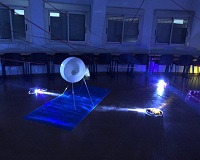 INSTRUMENTARIUM XX1
INSTRUMENTARIUM XX1
 CHILD PARTICIPATION IN THE PUBLIC SPHERE. APPROACHES, PROPOSALS AND METHODOLOGIES OF CHILDREN'S PARTICIPATORY BUDGETING IN THE VALENCIAN COMMUNITY (2015-2022)
CHILD PARTICIPATION IN THE PUBLIC SPHERE. APPROACHES, PROPOSALS AND METHODOLOGIES OF CHILDREN'S PARTICIPATORY BUDGETING IN THE VALENCIAN COMMUNITY (2015-2022)
 IDENTITART. Valencian identity through arts and design
IDENTITART. Valencian identity through arts and design
 COMPLEX TRAJECTORIES: “Promoting students’ successful trajectories in Higher Education Institutions. (face-to-face and online).”
COMPLEX TRAJECTORIES: “Promoting students’ successful trajectories in Higher Education Institutions. (face-to-face and online).”
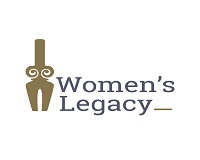 Women’s Legacy: Our Cultural Heritage for Equity
Women’s Legacy: Our Cultural Heritage for Equity
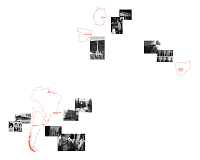 FROM SPACE OF PERPETRATION TO SITE OF MEMORY. FORMS OF REPRESENTATION (PROMETEO 2020)
FROM SPACE OF PERPETRATION TO SITE OF MEMORY. FORMS OF REPRESENTATION (PROMETEO 2020)
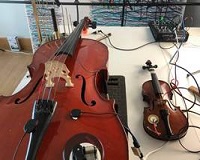 PLECTRUS project "Design and validation of an educational solution for the training and evaluation of musical intonation in real time using advanced online software"
PLECTRUS project "Design and validation of an educational solution for the training and evaluation of musical intonation in real time using advanced online software"
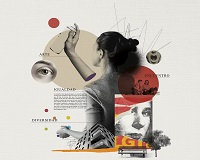 Raising awareness of gender equality and sexual diversity through artistic interventions in university contexts
Raising awareness of gender equality and sexual diversity through artistic interventions in university contexts





